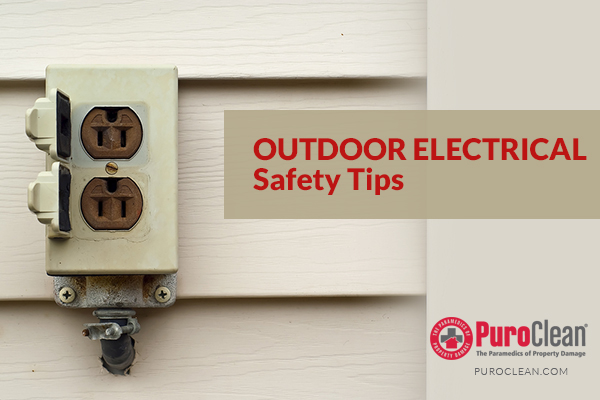Table of Contents
Introduction: What is an Eco-Friendly Home Restoration
An eco friendly home restoration is a term used to describe a kind of restoration that focuses on using sustainable techniques and materials to repair or upgrade a property while reducing environmental impacts. To get some eco-friendly home restoration DIY ideas, click here.
Eco-friendly restoration has become a driving force in modern home renovations, offering a way to preserve both the beauty of our homes and the health of our planet. By focusing on sustainable practices, homeowners can ensure their restoration projects not only save energy but also contribute to a healthier environment. Here, we’ll explore effective eco-friendly restoration techniques that are transforming homes in ways that are both beautiful and beneficial to the earth.

10 Effective Eco-Friendly Restoration Techniques
1. Using Reclaimed and Recycled Materials
Reclaimed and recycled materials reduce waste and environmental impact by giving a second life to materials. Here’s how to incorporate them:
- Wood: Salvaged wood from barns, shipping crates, and old structures can be refinished and used for flooring, cabinetry, and accent walls. Reclaimed wood has unique textures and colors that add warmth and character to spaces.
- Bricks and Stone: Used bricks and stones, when cleaned and repurposed, can create beautiful, rustic facades or outdoor landscaping features.
- Metal: Recycled metal is durable and can be fashioned into furniture, shelving, and décor elements, reducing the need for new resources.
Benefits: Reduces landfill waste, minimizes resource consumption, and adds character to your home through unique, storied materials.
2. Energy-Efficient Insulation and Sealing
A significant portion of a home’s energy loss occurs through poorly insulated walls, windows, and doors. Using eco-friendly insulation and sealing products can greatly reduce energy use.
- Eco-Friendly Insulation Options: Consider options like cellulose insulation made from recycled paper, sheep’s wool, and cotton (often from recycled denim) instead of traditional fiberglass insulation.
- Weatherstripping and Caulking: To eliminate air leaks, add weatherstripping around windows and doors, and apply caulking to gaps in walls and floors.
Benefits: Reduces energy bills, improves indoor comfort, and decreases a home’s carbon footprint.
3. Low-VOC and Eco-Friendly Paints and Finishes
Conventional paints and finishes can emit volatile organic compounds (VOCs), which are harmful to both human health and the environment. Eco-friendly alternatives include:
- Low-VOC and Zero-VOC Paints: These paints emit fewer toxins and have a lower environmental impact. Look for brands that are Green Seal certified for quality assurance.
- Natural Finishes: Finishes made from natural oils and waxes (such as linseed oil, beeswax, and carnauba wax) are excellent for sealing wood surfaces without harmful chemicals.
Benefits: Improves indoor air quality, reduces health risks, and minimizes environmental pollution.
4. Water Conservation Techniques
Restoration projects are an ideal time to introduce water-saving features that cut down on household water usage without sacrificing performance.
- Low-Flow Fixtures: Low-flow faucets, showerheads, and toilets reduce water use without affecting water pressure. These fixtures are now designed to be efficient while delivering great performance.
- Greywater Systems: A greywater system collects water from sinks, showers, and washing machines, allowing it to be reused for irrigation. This can significantly reduce household water consumption.
- Rainwater Harvesting: Installing a rainwater harvesting system to collect runoff from roofs can provide water for landscaping and gardening.
Benefits: Saves water, reduces utility bills, and conserves local water resources.
5. Sustainable Flooring Options
Eco-friendly flooring options are plentiful and diverse, offering beautiful, sustainable alternatives to traditional flooring.
- Bamboo Flooring: Bamboo grows quickly and is a renewable resource. It’s durable and provides a similar aesthetic to hardwood floors.
- Cork Flooring: Made from the bark of the cork oak tree, cork flooring is renewable, comfortable underfoot, and has natural soundproofing qualities.
- Linoleum: Unlike vinyl, linoleum is made from natural materials like linseed oil and jute. It’s biodegradable and durable, making it an eco-friendly flooring choice.
Benefits: Sustainable flooring choices help reduce the environmental impact, offer longevity, and often have unique, natural aesthetics.
6. Upgrading to Energy-Efficient Windows and Doors
Old, single-pane windows and poorly sealed doors can be a significant source of energy loss. Upgrading to energy-efficient options helps maintain indoor temperatures and reduce the need for heating or cooling.
- Double or Triple Glazing: These windows have multiple panes of glass that create insulating air spaces, improving energy efficiency.
- Low-E Glass: Low-emissivity (Low-E) glass coatings reflect heat, helping maintain indoor temperatures and reduce UV damage to furniture and flooring.
- Thermal Curtains and Blinds: These can be used as additional insulation, especially during extreme temperatures, to keep your home comfortable.
Benefits: Decreases heating and cooling costs, improves indoor comfort, and reduces the energy needed for climate control.
7. Energy-Efficient Lighting and Appliances
Switching to energy-efficient lighting and appliances is an easy yet effective way to make homes more eco-friendly.
- LED and CFL Lighting: LED and CFL bulbs use significantly less energy than traditional incandescent bulbs and last longer, reducing waste.
- Energy Star Appliances: When upgrading appliances, choose those with the Energy Star label, as they meet strict energy efficiency standards.
- Smart Home Technology: Smart thermostats, lighting systems, and appliances can be programmed for efficiency, reducing energy consumption based on usage.
Benefits: Lowers energy costs, reduces carbon footprint, and extends the life of appliances and lighting.
8. Eco-Friendly Roofing Solutions
An eco-friendly roof can help reduce energy costs, extend roof lifespan, and even contribute to the local ecosystem.
- Cool Roofs: These reflect more sunlight than standard roofs, keeping the building cooler and reducing the need for air conditioning.
- Green Roofs: A green or living roof has vegetation planted on it, which can improve insulation, reduce rain runoff, and provide a habitat for local wildlife.
- Solar Panels: Installing solar panels on the roof is one of the most effective ways to generate renewable energy, often enough to power the entire home.
Benefits: Increases energy efficiency, provides natural insulation, and potentially lowers utility bills through renewable energy production.
9. Sustainable Landscaping
Sustainable landscaping techniques enhance the beauty of your outdoor space while conserving resources.
- Native Plants: These require less water and maintenance as they’re adapted to the local climate. Native plants also provide food and shelter for wildlife.
- Drought-Resistant Plants and Xeriscaping: Using drought-resistant plants and designing a xeriscaped yard reduces water use, ideal for dry or water-scarce regions.
- Composting: Adding compost to garden soil can improve fertility naturally, reducing the need for chemical fertilizers.
Benefits: Supports local biodiversity, conserves water, and reduces the need for chemical fertilizers and pesticides.
10. Sourcing Locally
Using locally-sourced materials reduces transportation emissions and supports the local economy. Additionally, materials from your area are often better suited to withstand the local climate and conditions.
- Local Wood and Stone: Many regions offer their unique types of wood and stone, which can be perfect for everything from structural elements to decorative features.
- Buying from Local Vendors: Local businesses often stock eco-friendly and sustainably sourced materials, and buying locally also reduces the carbon footprint of transportation.
Benefits: Supports local businesses, reduces environmental impact, and often results in higher-quality materials.
For immediate assistance with property damage restoration, contact PuroClean Home Savers, Call (+1) 614-689-0012.
Conclusion
Eco-friendly restoration techniques go beyond aesthetics—they represent a conscious choice to reduce environmental impact while improving the comfort and efficiency of homes. By using reclaimed materials, installing energy-efficient features, adopting water conservation practices, and incorporating renewable energy, homeowners can transform their living spaces into sustainable havens that benefit both their families and the environment.
Modern home restoration is about creating harmony between comfort and sustainability. As eco-conscious restoration practices become more accessible, homeowners are discovering that these investments pay off in energy savings, reduced environmental impact, and healthier living environments.

